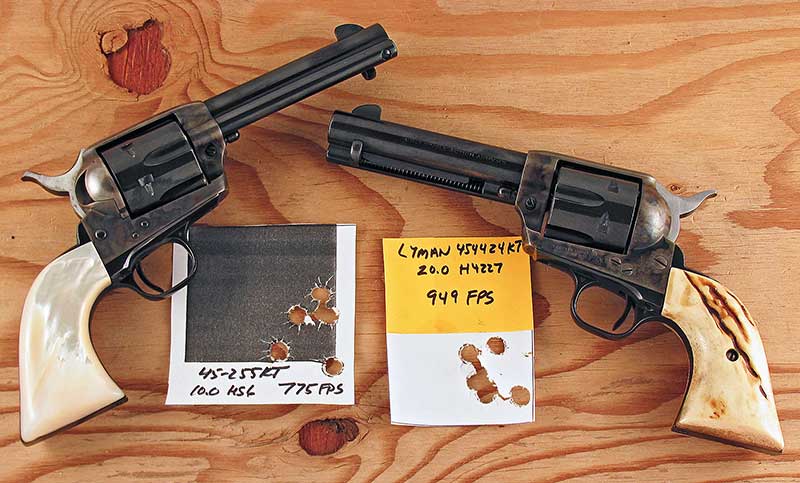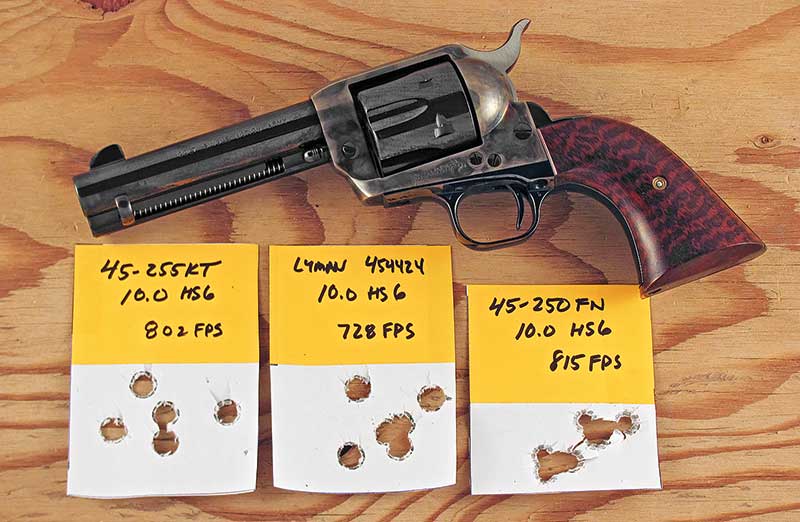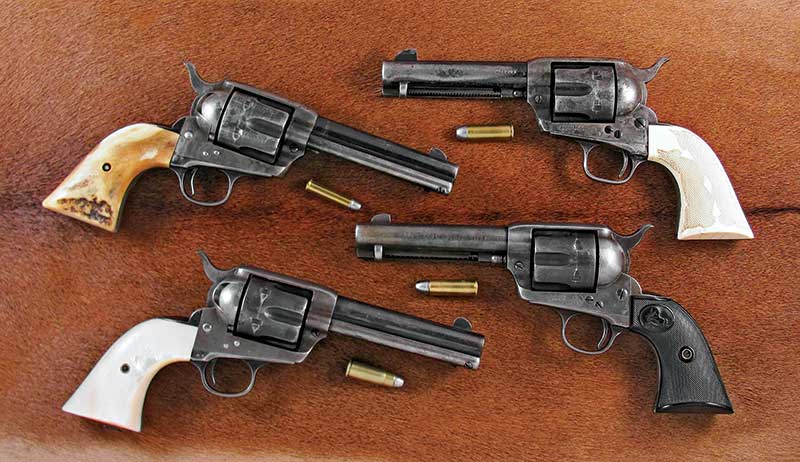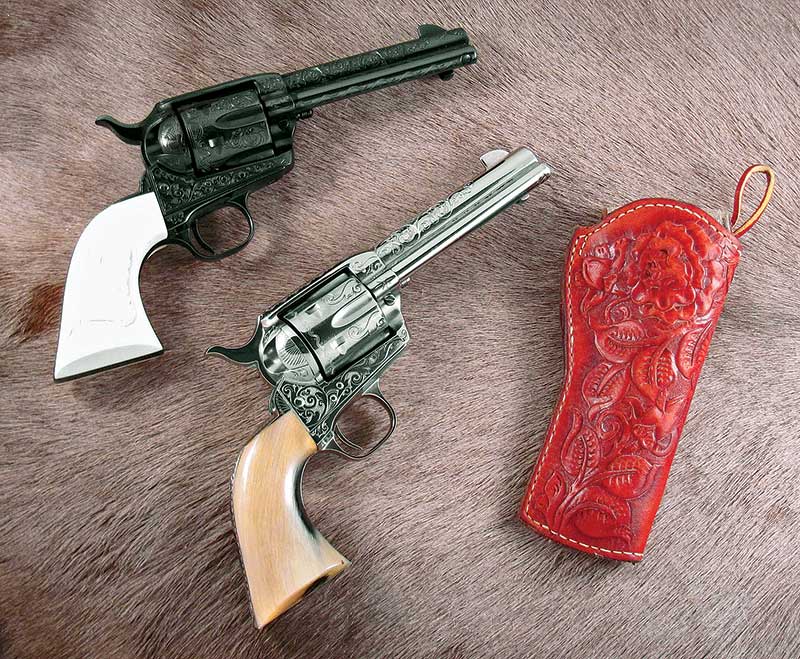The First Perfect Packin’ Pistol
Too many decades ago, I coined the phrase “Perfect Packin’ Pistol”. Over the years many dedicated sixgunners have taken up this phrase, often shortened to PPP, to indicate what may be the most useful handgun in one’s working collection.
Basically a Perfect Packin’ Pistol is a handgun — either sixgun or semi-auto — with an easy handling barrel length between 4″ to 51/2″ chambered in a cartridge capable of handling anything you may run into. It’s packable, portable and potent. It may be chambered in anything from .22 LR up to .500 Wyoming Express. While the former may work well in several parts of the country, the latter would certainly be most desirable in Alaska where you’d encounter something able to bite, claw or stomp.
Sam Colt gets the credit for coming up with the first workable PPP, a Paterson Colt 1836 revolver. It wasn’t a true sixgun, but rather a 5-shooter — it was quite fragile with its folding trigger, which came down when the hammer was cocked. It was a grand beginning.
In 1847, the first true sixgun arrived with the massive .44 Walker Colt. It was certainly powerful, however neither portable nor packable unless you traveled by horseback and used pommel holsters — the horse had to do the packin’ part. One year later, Colt started downsizing this sixgun with the 1st Model .44 Dragoon, which was then followed over the next two years by the 2nd and 3rd Models. They shaved about 8 ounces from the Walker’s weight and had barrels of 71/2″ instead of the Walker’s 9″ length. All of these were, and in replica form remain, excellent sixguns.
Cartridge-Firing Sixguns
In 1851, Sam Colt came real close to the concept of PPP with his .36 Navy, which was somewhat handicapped for easy carrying with its 71/2″ barrel. This beautifully balanced “little” sixgun was followed in 1860 with the .44 Army, which had more power but with an 8″ barrel. Both of these sixguns saw extensive service in the Civil War. Meanwhile over in Springfield, Mass., Smith & Wesson was taking a different path, namely a cartridge-firing revolver instead of the percussion/cap-and-ball method used by Colt. In 1869 the first cartridge-firing, big-bore sixgun arrived with the S&W .44 American. The stage was set for percussion pistols to be replaced by cartridge-firing sixguns, at least as soon as the S&W patent ran out.
After Colt passed, the decision-makers at Colt saw the great advantage of cartridge-firing sixguns — so the 1860 Army was converted to the .44 Colt cartridge using both the Richards and Richard/Mason Conversions. Later, the first Colt dedicated to cartridges, the 1871-72 Open-Top, arrived. It was just a matter of a few months until this Colt evolved into the 1873 Single Action Army. Those first “Peacemakers” had 71/2″ barrels, with most of the first .45 Colt sixguns going to the US Cavalry.
Same as the percussion pistols, the Colt SAA used black powder and most felt longer barrels were necessary to burn the black powder. Life is full of trade-offs and although the longer barrel may have been more efficient, it was definitely less convenient to carry. I did a lot of fast draw when I was younger with a 71/2″ Colt using a low-riding Arvo Ojala Hollywood fast draw holster — but such a rig is very impractical for every day, all day packing.
Comforting?
You’ve heard before a handgun is supposed to be comforting, not comfortable. But if it isn’t reasonably comfortable, you won’t carry it. For realistic comfort the handgun needs to be packed high on the belt and one of the first to realize this was Tom Threepersons, who designed what still just may be the Perfect Packin’ Pistol Scabbard. Tom’s design came about more than 40 years after the Perfect Packin’ Pistol arrived. Until then, the Perfect Packin’ Pistol was somewhat handicapped by not having comparable leather to go along with it.
Threepersons made several changes to the widespread Mexican Loop-style holster in use at the time. He raised it high on the belt, removed the voluminous back flap, angled the holster with about a 20- to 30-degree backward slant, which later became known as the FBI Slant, and removed all excess leather. At the time, Tom was packing an example of one of the first PPP’s, namely the .45 Colt SAA with a 43/4″ barrel.
The first SAA’s, as mentioned above, had 71/2″ barrels. I still find this barrel length one of the best balanced for shooting and certainly one of the easiest to make hits. Many of these were cut back by the military to make them easier to handle and carry as they became the Artillery Model with a 51/2″ barrel. This first PPP came to be by cutting the barrel back even with the ejector rod, which gave it a barrel length of 43/4″. This soon became the choice of those who wanted an easy-to-carry sixgun that was as fast from leather.
Bat Masterson Influence
Where did the first PPP come from? I remember reading a Bat Masterson letter to Colt, which used the letterhead of the Opera House Saloon in Dodge City, and it asked Colt to provide him a SAA with the barrel even with the end of the ejector rod. He also specified nickel-plating and gutta-percha “handles”.
Legend has it Bat Masterson was one of the recipients of the 12″-barreled .45 Colts given to Dodge City lawmen by Ned Buntline. I seem to remember reading somewhere Masterson cut his Buntline Special to a more usable barrel length. There’s no factory record of Buntline ordering such sixguns, however factory records aren’t always complete. But there are factory records of guns ordered by Bat Masterson.
From November 1879 to November 1885 Masterson ordered eight .45 Colt SA’s. The first one, with a 71/2″ barrel was silver-plated, pearl-gripped and had his name inscribed on the backstrap. Two of the subsequent guns had 51/2″ barrels while the other five — including a matched pair — had PPP lengths of 43/4″. They were nickel-plated and had gutta percha grips, except one fitted with ivories. With five of his sixguns being 43/4″-barreled .45’s it’d be easy to conclude Bat Masterson was the first to specify a barrel length even with the end of the ejector rod.
It would certainly add to the legend of Bat Masterson if we could give him credit for coming up with the 43/4″ Colt SAA, later known as the Civilian Model. Factory records show Masterson ordered his first such sixgun in February 1882; they also show it wasn’t the first.
According to A Study of the Colt Single Action Army Revolver (a book everyone who appreciates the Colt SAA should have!) by Graham, Kopec and Moore: “Factory ledgers reveal Colt did indeed assemble 43/4″-barreled SA’s before 1879. In one such instance a 56-gun shipment of 43/4″ .45 Eley SA’s was sent to Colt’s London Agency in May 1877.” So not only Masterson doesn’t receive credit, the first Colt PPP’s weren’t even chambered in .45 Colt and went to England rather than the Frontier West.
Other Packin’ Pistols
In the first quarter of the 20th century, Colt offered the PPP chambered in .44 Special and then in the late 1930’s in .357 Magnum. The Colt PPP reached the epitome of usefulness with the adjustable-sighted, modernized Flattop Target Model; the New Frontier began production in 1962. In the 43/4″ barrel length it would be chambered in .45 Colt, .44-40, .357 Magnum and .38 Special. I’ve never heard of a factory original New Frontier .44 Special with the PPP barrel length, so I’ve solved this problem by adding a .44 Special cylinder to a .44-40 New Frontier.
The concept of Perfect Packin’ Pistol spread far beyond the Colt Factory. In 1955 Bill Ruger’s first Blackhawk, the .357 Magnum Flattop, was issued with a 45/8″ barrel; I have no idea what happened to the other 1/8″! Ruger would go on to offer PPP’s in .45 Colt, .41 Magnum and finally, .44 Magnum.
One year before Ruger’s first Blackhawk, Great Western began offering PPP’s and Freedom Arms, which arrived in 1983, offered their Model 83 in 43/4″ PPP versions chambered in .454 Casull, .357 Magnum, .41 Magnum, .44 Magnum, .475 Linebaugh and .500 Wyoming Express. And of course there are excellent replica SA’s offered as PPP’s — one of my prized PPP’s is a Texas Longhorn Arms 43/4″ South Texas Army chambered in .44 Special.
As long as there are sixgunners, the first Perfect Packin’ Pistol will continue to have great influence.









